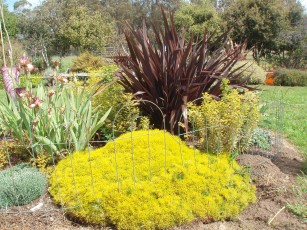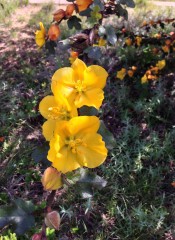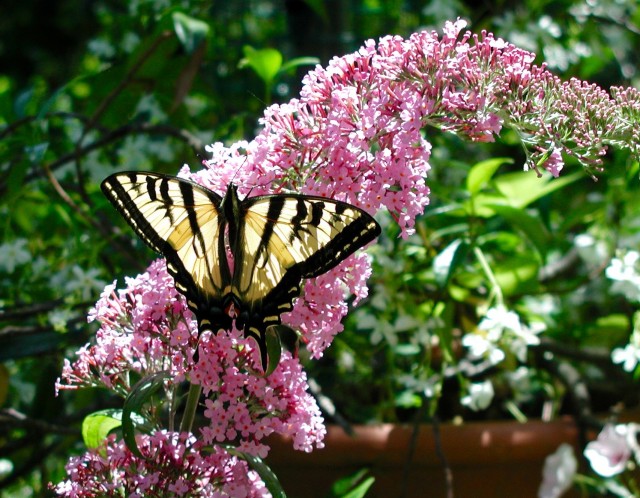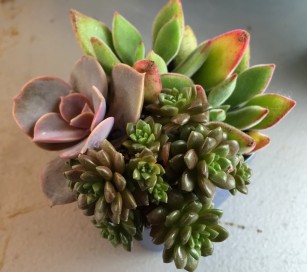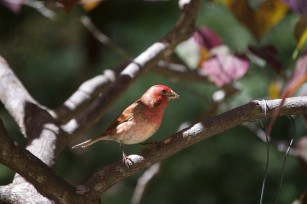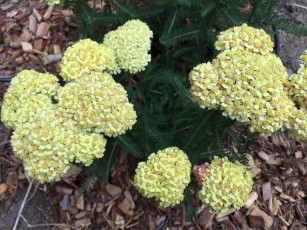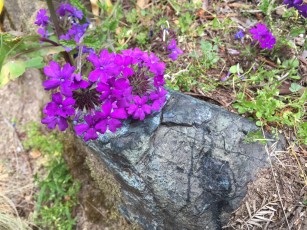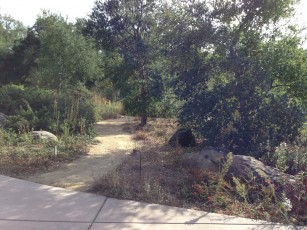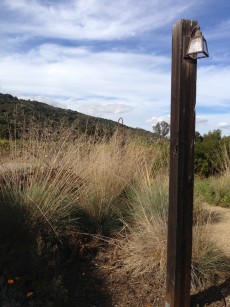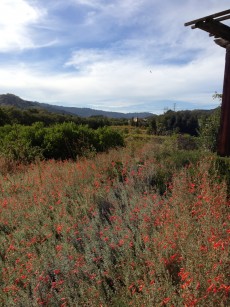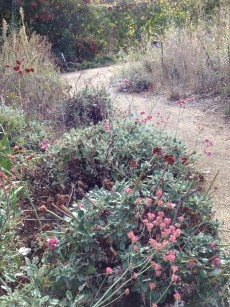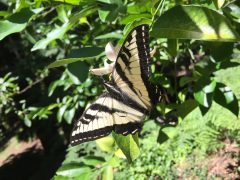
I may not be so fond of gophers but I never tire of the birds, butterflies and bees that visit my garden. I?m always on the look out for plants that will attract even more of these exquisite creatures and it?s one of the top requests for nearly every garden that I design. Fortunately there are many plants that fit the bill and have low water requirements for our summer dry climate.
Trees that provide fruit, seeds, nectar and protein from insects attract many kinds of songbirds. Our native Big Leaf Maple is a favorite of the Evening Grosbeak who relish the seeds and early spring buds. Another bird magnet is the dogwood. Our Pacific dogwood as well as the Eastern dogwood and even the hybrid of the two, Eddie?s White Wonder, all are very valuable sources of food for many birds. Their summer berries are high in fat and important for migratory and wintering birds.
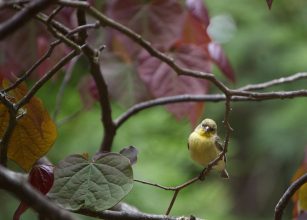
There are many great low water-use shrubs and perennials that attract birds. My favorite Lesser Goldfinch is partial to the seeds of yarrow, buckwheat and aster. Kevin?s mahonia is favored by Western bluebirds. Blooming now in our own neck of the woods is Mexican elderberry. Their butter yellow flowers will form purple berries rich in carbohydrates and protein and attract an incredible number of birds. And I always can find space for another variety of manzanita or ceanothus.
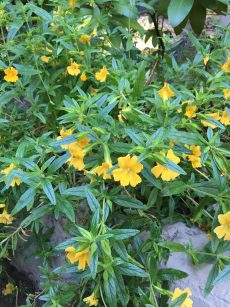
Both hummingbirds and butterflies are attracted to flowers that provide nectar. Among their favorites that won?t break your water budget are natives such as penstemon and salvia. galvezia, mimulus, monardella. California fuchsia and ribes are also important nectar sources for birds in your garden. Add a couple non-native, drought tolerant perennials like lavender, gaura, coreopsis, verbena, scabiosa, lantana and wallflower and you?ll provide a feast for all your winged visitors.
So how much water do different types of plants need during the heat of summer?
As a rule of thumb, trees and large shrubs need deep but infrequent waterings. They should be on a separate valve than your smaller shrubs and perennials. Water ornamental trees 1-3 times per month depending on the type and soil. Tree roots grow 12-36? deep and require 10 gallons of water per inch of trunk diameter.
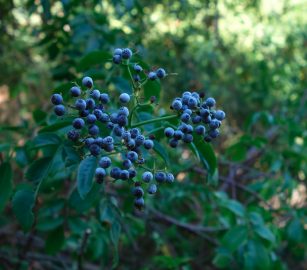
Apply with a soaker hose, drip system emitters or hand held hose with shut off and soft spray attachment according to your water districts restrictions. Don?t dig holes in the ground in an effort to water deeply. This dries out roots even more. Be sure to water the root zone to the indicated root depth every time you water. Watering deeper than the root zone only means you are wasting water. You can test how deep you watered by pushing a smooth rod -1/4? – 3/8? in diameter- into the ground soon after you irrigate. The soil probe should easily slide through the wet soil but become difficult to push when reaching dry soil.
The roots of smaller shrubs are 12-24? deep in the soil. Established native shrubs may need only monthly irrigation to keep them looking their best while other shrubs may need watering every 7-10 days during the heat of the summer. Perennial roots only go down 12? or so and may need watering once or twice a week depending on type.
With lots of mulch and the above watering tips you can keep all your plants happy and healthy for the birds, butterflies and bees to enjoy.


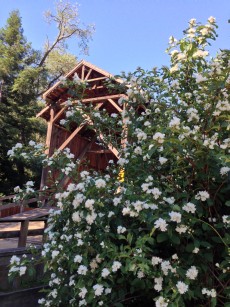
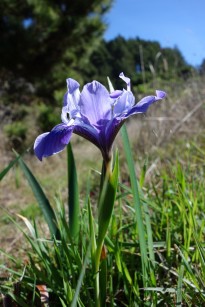
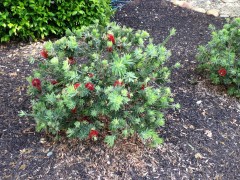
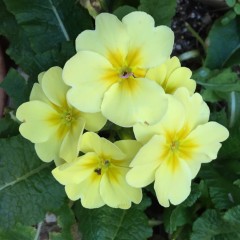
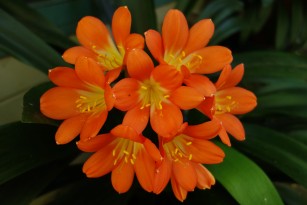
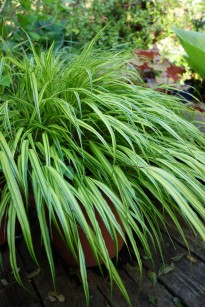
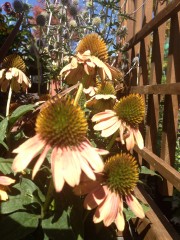 ant to add more vibrant colors to this area I?m looking to some of the new?echinacea or coneflower. From deep gold to pumpkin orange to red-orange sunset colors this perennial has medium water needs once established and is deer tolerant. I?m hoping the seed heads will attract more goldfinches to my garden if I don?t deadhead but allow the flowers to remain on the stalks throughout the summer and into the fall. I can also plant more California native grasses for the goldfinches like blue and yellow-eyed grass and festuca californica.
ant to add more vibrant colors to this area I?m looking to some of the new?echinacea or coneflower. From deep gold to pumpkin orange to red-orange sunset colors this perennial has medium water needs once established and is deer tolerant. I?m hoping the seed heads will attract more goldfinches to my garden if I don?t deadhead but allow the flowers to remain on the stalks throughout the summer and into the fall. I can also plant more California native grasses for the goldfinches like blue and yellow-eyed grass and festuca californica.